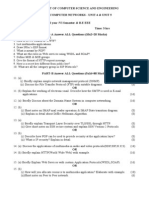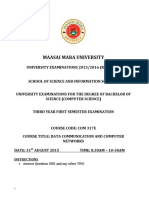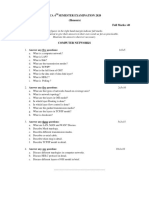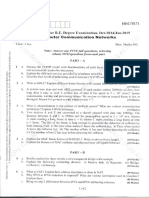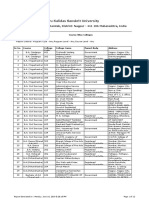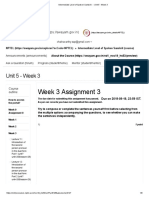0% found this document useful (0 votes)
108 views5 pages231 Computer Network
This document contains 15 questions divided into two sections. Section A contains 8 questions worth 5 marks each, for a total of 40 marks. Section B contains 3 questions worth 20 marks each, for a total of 60 marks. The questions cover topics related to computer networks including network topologies, protocols, layers, routing, encryption, and email.
Uploaded by
sumanth 786Copyright
© © All Rights Reserved
We take content rights seriously. If you suspect this is your content, claim it here.
Available Formats
Download as TXT, PDF, TXT or read online on Scribd
0% found this document useful (0 votes)
108 views5 pages231 Computer Network
This document contains 15 questions divided into two sections. Section A contains 8 questions worth 5 marks each, for a total of 40 marks. Section B contains 3 questions worth 20 marks each, for a total of 60 marks. The questions cover topics related to computer networks including network topologies, protocols, layers, routing, encryption, and email.
Uploaded by
sumanth 786Copyright
© © All Rights Reserved
We take content rights seriously. If you suspect this is your content, claim it here.
Available Formats
Download as TXT, PDF, TXT or read online on Scribd
/ 5


